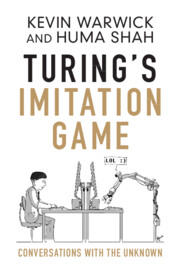Refine search
Actions for selected content:
48287 results in Computer Science

Turing's Imitation Game
- Conversations with the Unknown
-
- Published online:
- 12 October 2016
- Print publication:
- 22 September 2016
Studying the use and effect of graph decomposition in qualitativespatial and temporal reasoning
-
- Journal:
- The Knowledge Engineering Review / Volume 32 / 2017
- Published online by Cambridge University Press:
- 12 October 2016, e4
-
- Article
- Export citation
ROB volume 34 issue 11 Cover and Back matter
-
- Article
-
- You have access
- Export citation
ROB volume 34 issue 11 Cover and Front matter
-
- Article
-
- You have access
- Export citation
ASYMPTOTICALLY OPTIMAL MULTI-ARMED BANDIT POLICIES UNDER A COST CONSTRAINT
-
- Journal:
- Probability in the Engineering and Informational Sciences / Volume 31 / Issue 3 / July 2017
- Published online by Cambridge University Press:
- 05 October 2016, pp. 284-310
-
- Article
- Export citation
Automatic generation of design structure matrices through the evolution of product models
-
- Article
-
- You have access
- Open access
- HTML
- Export citation
Engineering design informatics
-
- Article
-
- You have access
- HTML
- Export citation
AIE volume 30 issue 4 Cover and Back matter
-
- Article
-
- You have access
- Export citation
AIE volume 30 issue 4 Cover and Front matter
-
- Article
-
- You have access
- Export citation
